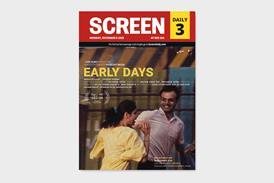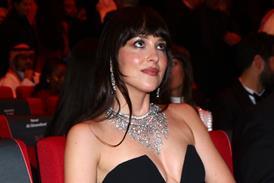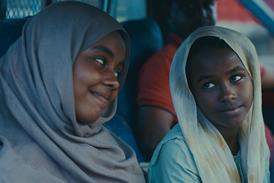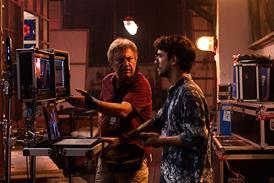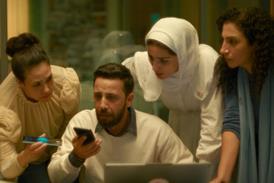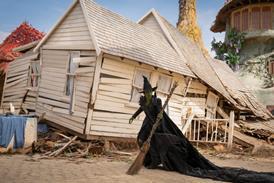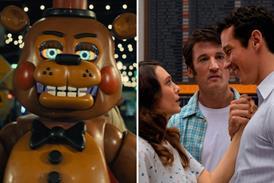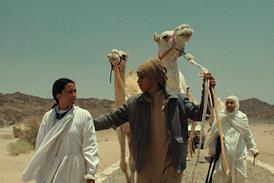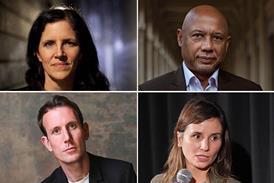Dmytro Sukholytkyy-Sobchuk’s thoughtful docmentary plays IDFA competition
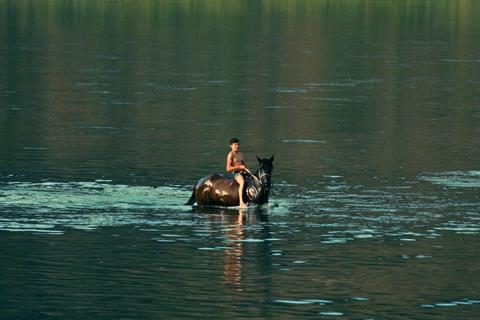
Dir: Dmytro Sukholytkyy-Sobchuk. Ukraine/Germany. 2025. 90mins
While documentaries made in war zones are often urgent and angry, Dmytro Sukholytkyy-Sobchuk’s lyrical, veiled portrait of an Amish-like religious community in Western Ukraine takes a different approach. It does not avoid the subject of the war, but it approaches it carefully, thoughtfully, like the two figures who, in one of many scenes of lambent widescreen natural beauty, are seen silhouetted in the distance, gingerly testing the ice on the Dniester river.
A narrative about war, pacifism and the cyclical nature of human history
This calm, wide watercourse, which flows south from its source near the Polish border to the Black Sea, runs through Silent Flood and sets its contemplative tone. We learn from voice-overs and shots of long-destroyed bridges that the Dniester has not always been so placid. War has passed through this rural Eden, and rising water levels have brought destruction too – both together in the summer of 1941, when the German push east through Ukraine coincided with the worst river flood of the century.
Making its debut in IDFA’s international competition, Silent Flood looks set to secure further festival berths. But for those prepared to surrender to its slow, poetic rhythms, it is also cinematic enough to attract niche theatrical audiences curious to see a side of Ukraine that does not feature on the news.
The thick mist that envelopes this watery landscape in the film’s opening sequence is just one of several occluded views. Figures seen through bonfire smoke, a young boy looking uncertainly towards the camera from a half-open door: these seem to be visual metaphors for a difficulty at the heart of the film that, in the absence of explanatory captions or other pointers, we are left to work out gradually for ourselves.
The Christian rural community at the centre of Silent Flood is reticent, reclusive, camera-shy. We see children playing, with the girls – even the very youngest – wearing headscarves. Adults appear, going about their everyday lives – washing clothes and a baby’s pram in the river, making bread, dining by candlelight, making furrows with a hand-plough, shopping at the market – but they never talk on camera. It’s left to voice-over interviews (we never see the speakers) to fill us in on some of the history, beliefs and way of life of a small, close-knit group that gives itself no name, has no priests, and rejects modern conveniences like electricity or phones. They are not Amish, a man’s voice tells us, but “we are in touch with them… they came to visit us once”.
Othe voices are heard talking with a mixture of gentle bafflement and scepticism about these “hat-wearers”, as the community is known by outsiders. The men refuse to fight in wars, a woman recounts… but they have no problems travelling abroad, or using roads and other services that they pay no taxes for. But Silent Flood flows past these polemical eddies, offering but not underlining – in a prologue, three chapters and an epilogue – a narrative about war, pacifism and the cyclical nature of human history.
We see community members collecting loaves of bread and other foodstuffs in a huge storeroom, then sending heir produce east to Ukrainian soldiers on the frontline. Soon enough we’re with a group of the latter, gathered around a table in their cramped billet at Christmas, breaking the community’s bread and talking about what they know of their benefactors, including their huge families – the consequence, one informs the others, of girls being encouraged to leave school early to become mothers.
In the film’s epilogue, we follow a mine-clearing squad in the Kramatorsk region, and remember the voice-overs of those old people from back out west reminiscing, in the prologue, about neighbours who were killed, maimed or scarred by mines or unexploded ordinance after the Second World War. Silent Flood is a work that makes much of its points through tone, light, ambience and evocative juxtaposition. Refusal to fight is not an option or, perhaps, even a desire for these soldiers, who have spent years apart from their families. But the presence of another way of life in this same war-torn country lends a poignancy to the quiet scene of their Christmas meal.
Production companies: Tabor Ltd
International sales: Filmotor, michaela@filmotor.com
Producers: Karina Kostyna, Eugene Rachkovsky
Cinematography: Ivan Morarash, Oleksandr Korotun, Viacheslav Tsvietkov, Dmytro Sukholytkyy-Sobchuk
Editing: Mykola Bazarkin, Dmytro Sukholytkyy-Sobchuk

